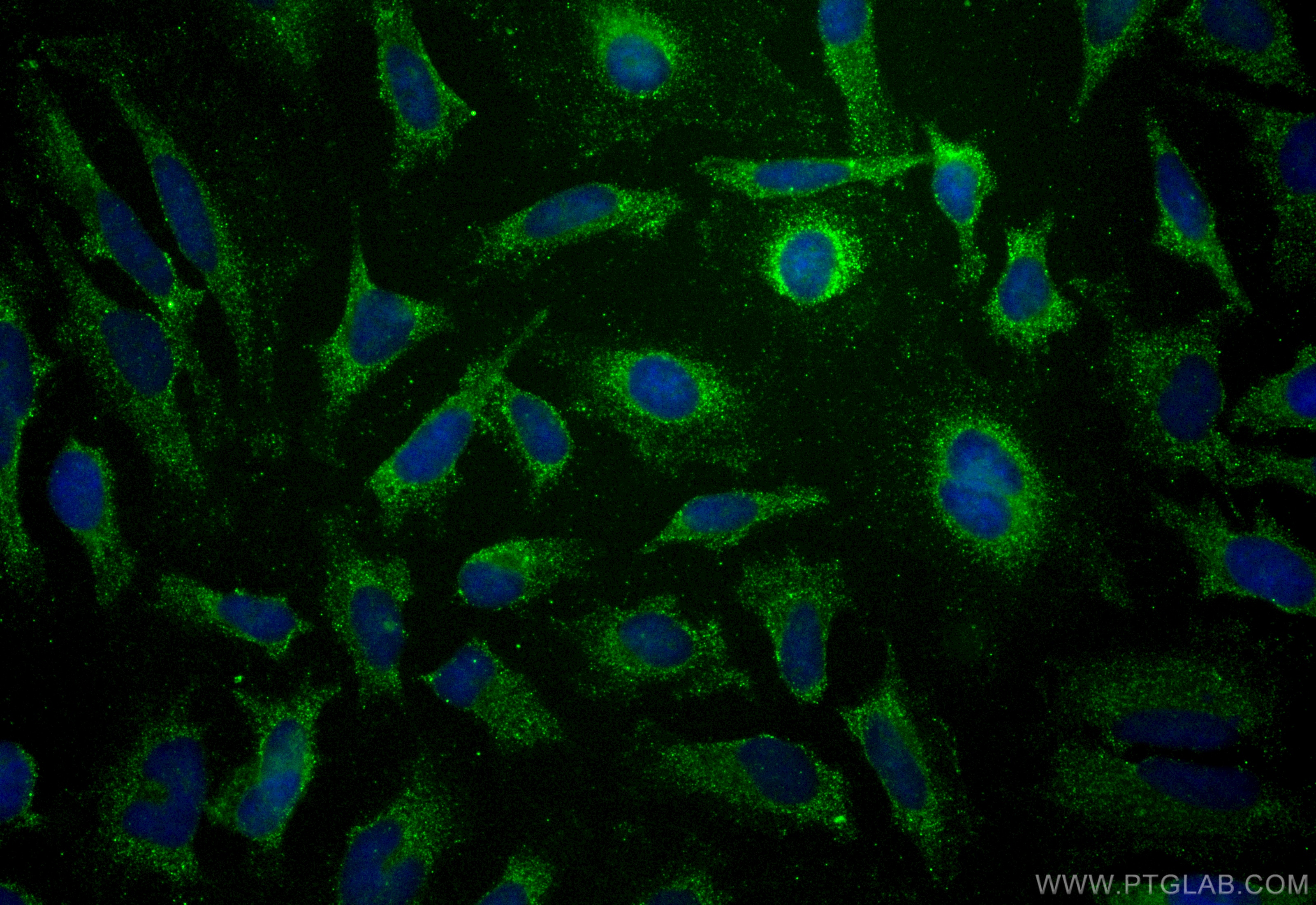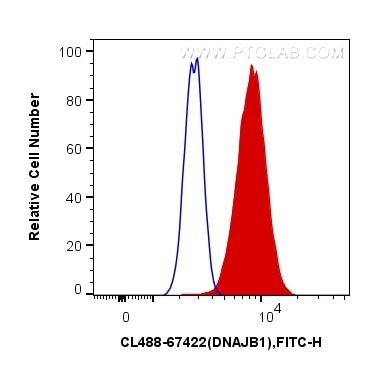DNAJB1 Monoklonaler Antikörper
DNAJB1 Monoklonal Antikörper für IF/ICC, FC (Intra)
Wirt / Isotyp
Maus / IgG1
Getestete Reaktivität
human
Anwendung
IF/ICC, FC (Intra)
Konjugation
CoraLite® Plus 488 Fluorescent Dye
CloneNo.
1E8E10
Kat-Nr. : CL488-67422
Synonyme
Geprüfte Anwendungen
| Erfolgreiche Detektion in IF/ICC | HeLa-Zellen |
| Erfolgreiche Detektion in FC (Intra) | HeLa-Zellen |
Empfohlene Verdünnung
| Anwendung | Verdünnung |
|---|---|
| Immunfluoreszenz (IF)/ICC | IF/ICC : 1:50-1:500 |
| Durchflusszytometrie (FC) (INTRA) | FC (INTRA) : 0.40 ug per 10^6 cells in a 100 µl suspension |
| It is recommended that this reagent should be titrated in each testing system to obtain optimal results. | |
| Sample-dependent, check data in validation data gallery | |
Produktinformation
CL488-67422 bindet in IF/ICC, FC (Intra) DNAJB1 und zeigt Reaktivität mit human
| Getestete Reaktivität | human |
| Wirt / Isotyp | Maus / IgG1 |
| Klonalität | Monoklonal |
| Typ | Antikörper |
| Immunogen | DNAJB1 fusion protein Ag3830 |
| Vollständiger Name | DnaJ (Hsp40) homolog, subfamily B, member 1 |
| Berechnetes Molekulargewicht | 340 aa, 40 kDa |
| Beobachtetes Molekulargewicht | 38 kDa |
| GenBank-Zugangsnummer | BC019827 |
| Gene symbol | DNAJB1 |
| Gene ID (NCBI) | 3337 |
| Konjugation | CoraLite® Plus 488 Fluorescent Dye |
| Excitation/Emission maxima wavelengths | 493 nm / 522 nm |
| Form | Liquid |
| Reinigungsmethode | Protein-G-Reinigung |
| Lagerungspuffer | PBS with 50% glycerol, 0.05% Proclin300, 0.5% BSA |
| Lagerungsbedingungen | Bei -20°C lagern. Vor Licht schützen. Nach dem Versand ein Jahr stabil. Aliquotieren ist bei -20oC Lagerung nicht notwendig. 20ul Größen enthalten 0,1% BSA. |
Hintergrundinformationen
DNAJB1 is a member of the heat shock 40 protein family and has been involved in a variety of cellular processes, including the proteasome pathway, endoplasmic reticulum stress and viral infection. DNAJB1-PRKACA gene fusions have been considered diagnostic for fibrolamellar hepatocellular carcinoma.
Protokolle
| PRODUKTSPEZIFISCHE PROTOKOLLE | |
|---|---|
| IF protocol for CL Plus 488 DNAJB1 antibody CL488-67422 | Protokoll herunterladen |
| FC protocol for CL Plus 488 DNAJB1 antibody CL488-67422 | Download protocol |
| STANDARD-PROTOKOLLE | |
|---|---|
| Klicken Sie hier, um unsere Standardprotokolle anzuzeigen |



